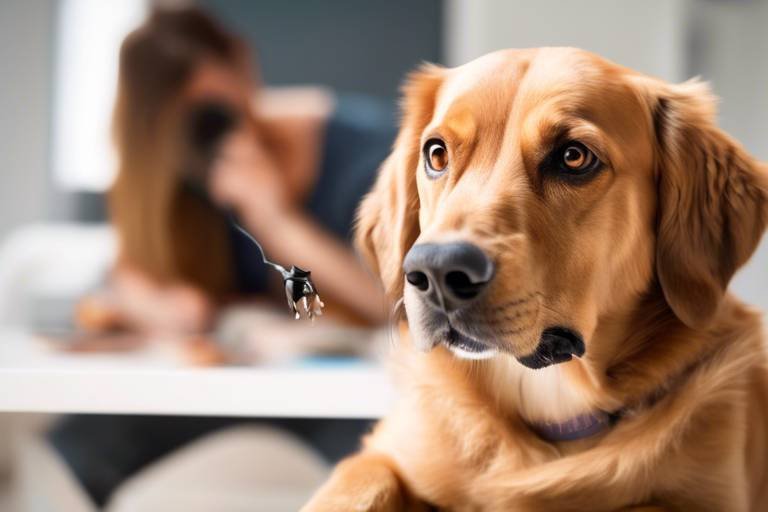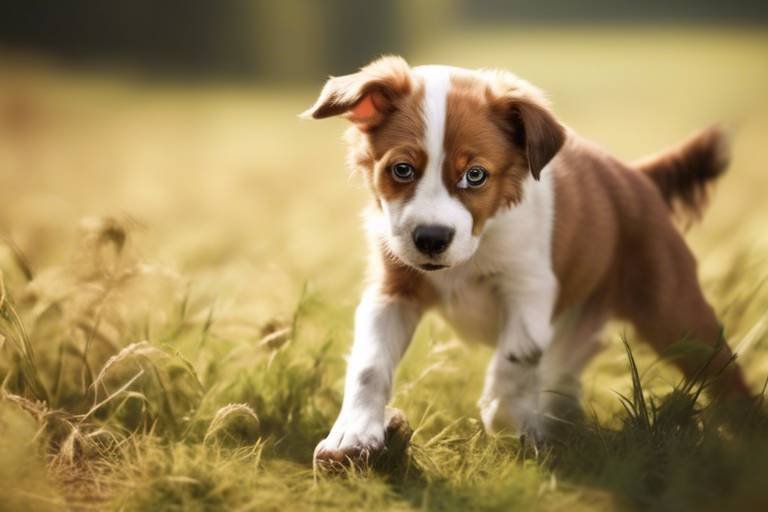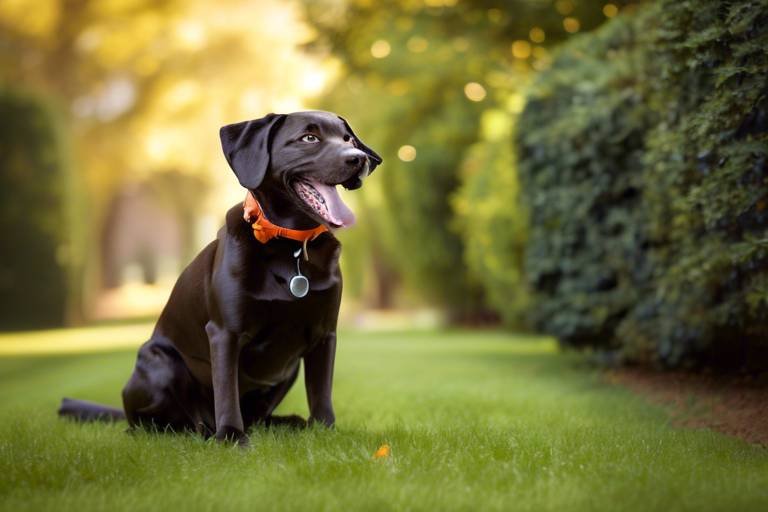Tips for Teaching Your Dog to Wait for Food
This article provides effective strategies and techniques to train your dog to patiently wait for their meals, promoting good behavior and a stronger bond between you and your furry friend.
To successfully teach your dog to wait for food, it's essential to understand their natural instincts and behaviors. Dogs are creatures of habit and thrive on routine. By recognizing their innate tendencies, you can tailor your training methods to suit their needs and temperament. For instance, dogs often respond better to positive reinforcement rather than punishment. Understanding this can make a significant difference in how your dog perceives the training process.
Creating an ideal training environment is crucial for minimizing distractions. A quiet, familiar space allows your dog to focus on learning the wait command without unnecessary interruptions. Imagine trying to study in a noisy café; it’s nearly impossible! The same goes for your pup. If the environment is chaotic, your dog will struggle to concentrate on what you want them to learn.
Ensure the training area is free from distractions, with enough space for your dog to feel comfortable. This setup encourages your dog to concentrate on the task at hand. You might want to consider using a specific spot in your home, like a corner of your kitchen, where your dog associates meals with training sessions. The more comfortable and familiar the area, the better your dog will perform.
Using a leash can help maintain control during training, preventing your dog from rushing towards the food. This method reinforces the wait command effectively. Think of the leash as a gentle reminder of the rules; it keeps your dog in check while they learn the ropes. Just remember to be gentle and patient, as the goal is to teach, not to scold.
Establishing a consistent training schedule and timing is vital. Regular practice sessions help reinforce the behavior you want to instill in your dog, making the training more effective. Dogs thrive on routine, so try to train at the same times each day. This consistency helps your dog understand that waiting for food is part of their daily routine, much like going for a walk or playing fetch.
Utilizing positive reinforcement techniques encourages your dog to associate waiting with rewards. This approach fosters a positive learning experience and motivates your dog to comply with the wait command. For example, when your dog successfully waits for their food, reward them with a treat or praise. This not only makes them feel good but also strengthens the behavior you want to encourage.
Start with short waiting periods and gradually increase the duration as your dog becomes more comfortable. This gradual progression helps build patience and reinforces the desired behavior. Just like humans, dogs need time to adapt to new expectations. If you expect them to wait indefinitely from day one, you’re setting them up for failure. Instead, celebrate small victories as they learn to hold off for longer periods.
Incorporate treats strategically to reward your dog for waiting. This method reinforces the behavior and encourages your dog to remain patient during feeding times. However, be mindful of the quantity of treats you give; you want to reward them without overindulging. A small piece of their favorite treat can go a long way in reinforcing good behavior.
Keep track of your dog’s progress throughout the training process. Observing improvements allows you to adjust your techniques and ensure your dog is learning effectively. You might consider keeping a training journal where you note down the duration your dog waits, their level of patience, and any challenges that arise. This documentation can help you identify patterns and areas that need more focus.
Training your dog to wait for food may present challenges. Identifying common issues and implementing effective solutions can help you overcome these obstacles and achieve success. For instance, if your dog is particularly food-driven, you might find it harder to get them to wait. In such cases, patience and persistence are key.
If your dog shows signs of impatience, it’s essential to remain calm and consistent. Gradually increasing wait times can help your dog learn to be more patient. Remember, it’s not about rushing the process; it’s about building a solid foundation for future training.
If distractions hinder your training, consider changing the environment or using barriers to minimize external stimuli. This adjustment can help your dog focus better on the task. Sometimes, a simple change of scenery can work wonders, allowing your dog to concentrate better on the training.
Recognizing and celebrating your dog’s achievements is important for motivation. Acknowledging their progress fosters a positive training atmosphere and strengthens the bond between you and your dog. Just like we feel good when we achieve something, dogs thrive on praise and recognition.
Set milestones for your dog’s training and reward them when they reach these goals. Celebrating small victories encourages continued progress and reinforces good behavior. For example, if your dog successfully waits for a full minute, give them a big cheer and a treat! This positive reinforcement creates a happy training environment.
Training your dog to wait for food not only instills discipline but also enhances your relationship. A well-trained dog is often more responsive and connected to their owner. It’s a win-win situation; your dog learns valuable skills, and you both enjoy a deeper bond.
- How long should I train my dog each day? Aim for short, focused sessions of about 5-10 minutes, 2-3 times a day.
- What if my dog refuses to wait? Go back to shorter wait times and gradually increase them. Patience is key!
- Can I use their regular food as a reward? Absolutely! Just make sure to adjust their meals accordingly to avoid overfeeding.
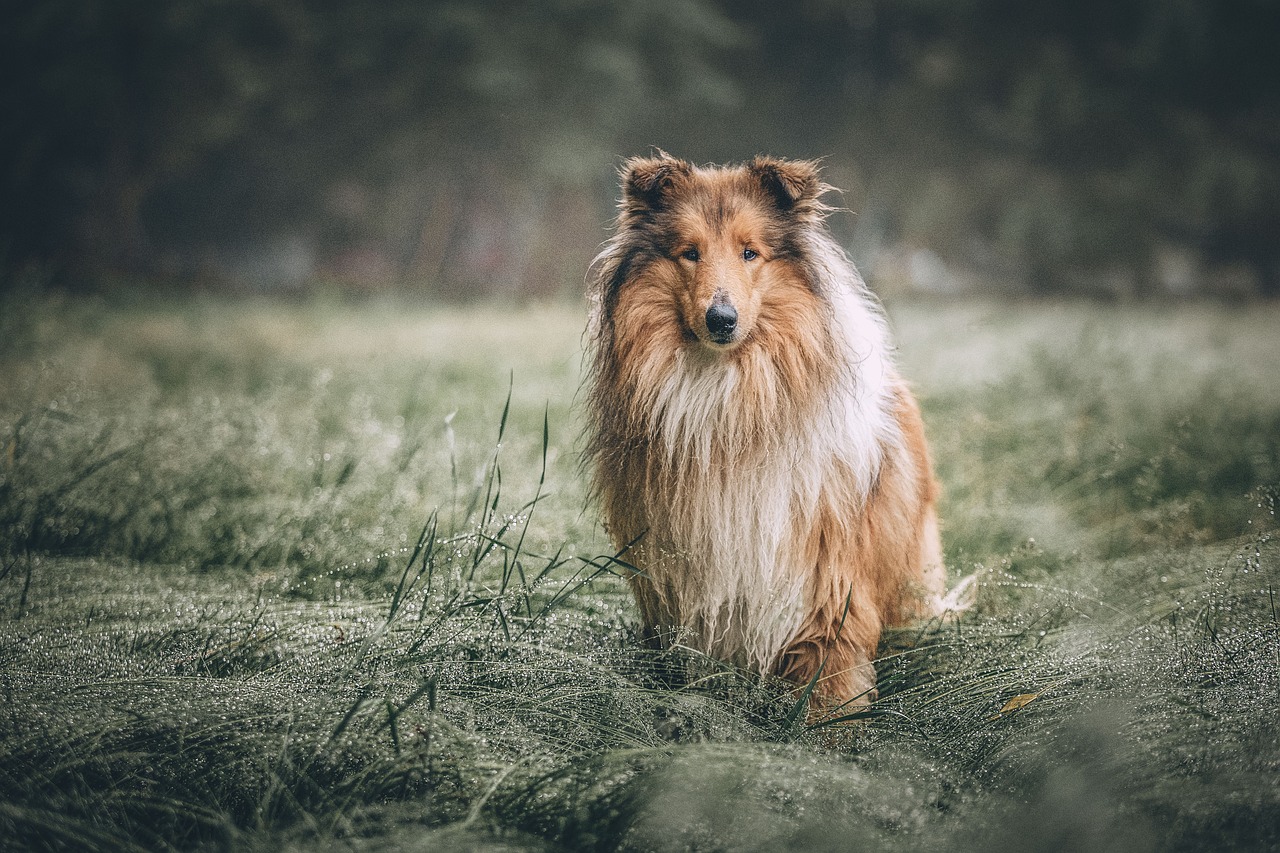
Understanding Canine Behavior
To successfully teach your dog to wait for food, it's essential to understand their natural instincts and behaviors. Dogs are inherently social animals, and their behaviors are often driven by their instincts to seek approval from their human companions. By recognizing these instincts, you can tailor your training methods to suit their needs and temperament.
One of the primary instincts in dogs is their desire for food. This instinct can sometimes lead to impulsive behavior, especially when they see or smell something delicious. Understanding this can help you approach training with empathy. Instead of viewing your dog’s eagerness as a flaw, consider it a natural reaction that can be redirected through proper training.
Additionally, dogs thrive on routine and consistency. They are creatures of habit and often feel more secure when they know what to expect. By establishing a consistent feeding schedule and training routine, you can help your dog understand when it’s time to eat and when it’s time to wait. This predictability can significantly reduce anxiety and impatience during training sessions.
Moreover, dogs communicate primarily through body language. Recognizing signs of excitement or impatience—such as barking, whining, or jumping—can provide valuable insights into your dog’s state of mind. For instance, if your dog is sitting calmly but staring at the food bowl, they may be ready to learn the wait command. Understanding these cues can help you adjust your training techniques accordingly.
Incorporating positive reinforcement is another crucial element in understanding canine behavior. Dogs respond well to rewards, whether it be treats, praise, or playtime. When they associate the wait command with positive outcomes, they are more likely to repeat the behavior. This creates a win-win situation: your dog learns patience, and you strengthen your bond through positive experiences.
Overall, grasping your dog's behavior is the foundation of successful training. By being aware of their instincts, communication methods, and the importance of routine, you can create a more effective training environment. This understanding not only helps in teaching your dog to wait for food but also fosters a deeper connection between you and your furry friend.
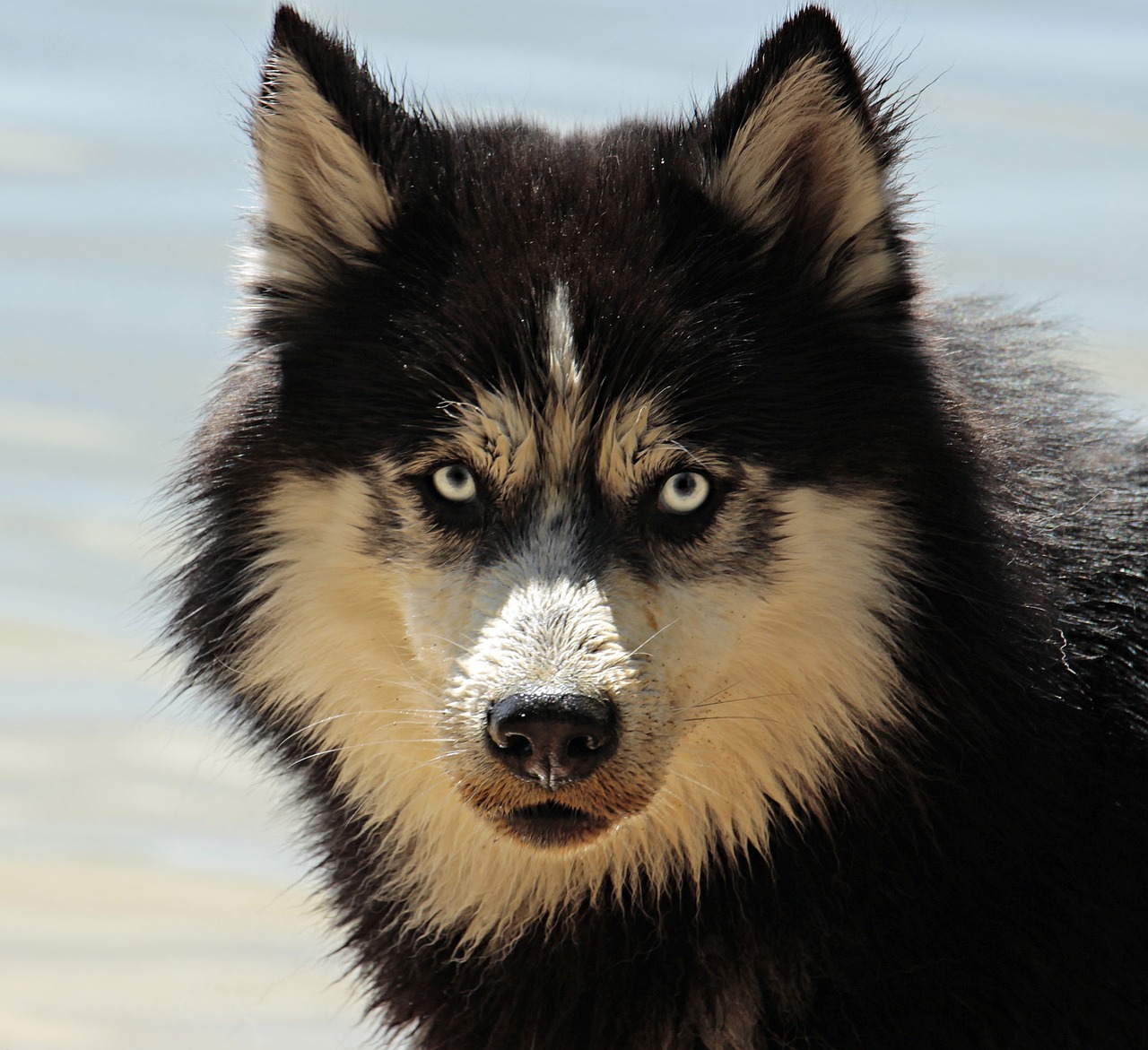
Choosing the Right Training Environment
When it comes to teaching your dog to wait for food, the training environment plays a crucial role in the success of your efforts. Imagine trying to concentrate on a task while surrounded by loud noises, distractions, and chaos. It would be nearly impossible, right? The same applies to your furry friend! A quiet, familiar space is essential for minimizing distractions and helping your dog focus on the task at hand.
To create the perfect training environment, consider the following factors:
- Familiarity: Choose a spot in your home where your dog feels comfortable and relaxed. This could be a cozy corner of the living room or a designated training area in your backyard.
- Quietness: Select a time of day when there are minimal distractions. Early mornings or late evenings might be ideal, especially if you live in a busy neighborhood.
- Space: Ensure there is enough room for your dog to sit or lie down comfortably without feeling cramped. A spacious area allows them to focus better on your commands.
Setting up the training area is just the beginning. You also need to consider the tools you might need. A leash can be a valuable asset during training sessions. It helps maintain control and prevents your dog from rushing towards their food before they’ve been given the command to eat. Think of the leash as a gentle reminder that they need to wait. This method reinforces the wait command effectively and builds the foundation for their understanding.
Additionally, timing and consistency are vital components of a successful training environment. Establishing a regular training schedule not only helps your dog learn the wait command but also makes the process more enjoyable for both of you. Dogs thrive on routine, and knowing when to expect training sessions can help them prepare mentally. Just like humans benefit from a structured schedule, your dog will appreciate the predictability of their training.
In summary, creating the right training environment is all about ensuring your dog is comfortable, focused, and ready to learn. By choosing a familiar, quiet space, using a leash for control, and maintaining a consistent training schedule, you're setting the stage for success. Remember, patience is key, and with time, your dog will master the art of waiting for their food!
Q: How long should I train my dog each day?
A: Short, consistent training sessions of about 5-10 minutes a few times a day are typically most effective. This keeps your dog engaged without overwhelming them.
Q: What if my dog doesn't seem to understand the wait command?
A: Be patient! Dogs learn at their own pace. Ensure you are using positive reinforcement and gradually increasing the difficulty of the command.
Q: Can I train my dog to wait for food while there are other distractions around?
A: It’s best to start in a distraction-free environment. Once your dog has mastered the command, you can gradually introduce distractions to reinforce their training.
Q: How do I know if my dog is making progress?
A: Look for signs of patience, such as your dog waiting calmly for their food without excessive whining or pacing. Keeping a training journal can also help you track their progress.
Setting Up the Training Area
Creating the perfect training area for your dog is like setting the stage for a fantastic performance. You want everything to be just right to ensure your furry friend can focus and learn effectively. Start by choosing a quiet space in your home, away from the hustle and bustle of daily life. This could be a cozy corner of your living room or even a dedicated space in your backyard. The key is to minimize distractions so your dog can concentrate on the task at hand.
Next, consider the size of the area. You want enough room for your dog to sit, stand, and move around comfortably. A cramped space can make your dog feel anxious or restricted, which isn’t conducive to learning. Think of it as giving your dog their own little classroom where they can feel safe and secure.
To further enhance the training environment, remove any potential distractions. This includes toys, other pets, or anything that might catch your dog's attention. You want them to focus solely on you and the training commands. If you’re training indoors, consider using a baby gate to create a designated area that keeps distractions at bay. If outdoors, try to choose a time when the neighborhood is quiet, perhaps early in the morning or later in the evening.
Another aspect to consider is the surface on which you’ll be training. Dogs can be sensitive to different textures, so a comfortable surface can make a big difference. If you’re training indoors, a rug or carpet can provide a cozy spot for your dog to sit. Outdoors, a flat, grassy area is ideal. This way, your dog can focus on learning without being distracted by discomfort.
Finally, using a leash during training can help maintain control and ensure your dog stays focused. A leash not only prevents them from rushing towards the food but also reinforces the wait command. Think of it as a gentle reminder that they need to stay put until you say otherwise. Just remember to keep the leash loose and avoid pulling, as you want to create a positive experience for your dog.
In summary, setting up the training area is all about creating a calm, distraction-free environment that allows your dog to focus on learning. With the right space, surface, and tools, you’ll be well on your way to teaching your dog to wait patiently for their food.
- How long should training sessions be? Keep sessions short and engaging, ideally between 5 to 10 minutes, especially for younger dogs.
- What if my dog doesn’t respond to the wait command? Be patient and consistent. It may take time for your dog to understand. Use positive reinforcement to encourage them.
- Can I train my dog to wait for food at mealtimes? Yes! Incorporate the wait command into their feeding routine to reinforce the behavior.
- Should I use different commands for different behaviors? It’s best to keep commands simple and consistent to avoid confusing your dog.
Using a Leash for Control
When it comes to training your dog to wait for food, using a leash can be a game changer. Imagine trying to teach a toddler to wait patiently while cookies are baking—it's a challenge, right? Just like that little one, your furry friend may struggle with the temptation of food. A leash acts as a gentle reminder to your dog that they need to stay put, allowing you to maintain control during training sessions. This simple tool can significantly enhance your training effectiveness and ensure that your dog understands the wait command.
Using a leash provides you with the ability to guide your dog without resorting to shouting or frustration. Instead of letting your dog dash towards their food bowl the moment you set it down, the leash keeps them in a designated area, reinforcing the idea that they must wait. It’s essential to use a leash that’s comfortable and allows enough freedom for your dog to feel relaxed while still being under your control.
Here are some tips on how to effectively use a leash during training:
- Choose the Right Leash: Select a leash that is not too long or too short. A standard 6-foot leash works well for most training exercises.
- Stay Calm: Your demeanor matters. If you’re anxious or frustrated, your dog will pick up on that energy. Keep a calm and positive attitude.
- Practice Patience: Use the leash to gently guide your dog back into position if they try to move towards the food. This is not a punishment, but rather a way to reinforce the wait command.
As you practice, remember that the leash is a tool to help communicate with your dog. It's not about restraining them but about creating a safe space for learning. Over time, as your dog becomes more reliable with the wait command, you can gradually reduce the use of the leash, allowing them to gain confidence in their ability to wait patiently.
In summary, using a leash for control during food training sessions is an effective strategy that can help your dog learn the wait command more efficiently. It fosters a sense of discipline while also ensuring that both you and your furry friend have a positive training experience. With patience and consistency, your dog will soon understand that waiting is not only expected but also rewarded!
- How long should I use the leash during training? Start with the leash until your dog consistently waits for their food. Gradually reduce its use as they improve.
- What if my dog becomes agitated while on the leash? If your dog shows signs of frustration, take a step back. Shorten the training sessions and gradually increase the difficulty as they become more comfortable.
- Can I use a harness instead of a collar? Yes! A harness can provide more comfort for your dog, especially if they tend to pull.
Timing and Consistency
When it comes to training your dog to wait for food, timing and consistency are absolutely crucial. Think of it like teaching a child to ride a bike; if you don't practice regularly and reinforce the lessons, they'll struggle to learn. Similarly, your dog needs a structured approach to understand what you expect from them. Establishing a regular training schedule helps your furry friend anticipate when they'll be practicing their wait command, making it easier for them to focus and learn.
To achieve this, try to set specific times for training sessions each day. For example, you might decide to practice right before meals or during a quiet moment in the evening. This routine not only helps your dog become accustomed to the training but also strengthens their understanding of the wait command. Consistency in your commands and rewards is just as important. Always use the same word or phrase when asking your dog to wait, and ensure that everyone in your household is on the same page to avoid confusion.
Additionally, timing your rewards appropriately is key. If your dog waits patiently, reward them immediately after they comply. This immediate reinforcement helps them make the connection between the command and the reward, solidifying the behavior in their mind. If you wait too long to reward them, they might not associate the treat with their good behavior, leading to confusion. Here’s a simple table to illustrate how you can structure your training sessions:
| Day | Training Time | Duration | Notes |
|---|---|---|---|
| Monday | 6:00 PM | 10 minutes | Focus on short waits |
| Tuesday | 6:00 PM | 10 minutes | Introduce longer waits |
| Wednesday | 6:00 PM | 10 minutes | Practice with distractions |
| Thursday | 6:00 PM | 10 minutes | Reinforce previous lessons |
| Friday | 6:00 PM | 10 minutes | Celebrate progress |
Remember, the goal is to create a clear and predictable training environment that your dog can rely on. The more consistent you are with your training, the more confident your dog will become in their ability to wait for food. This not only improves their behavior but also fosters a stronger bond between you and your furry companion, as they learn to trust your commands and expectations.
- How long should I train my dog each day? It's best to keep training sessions short, around 10-15 minutes, to maintain your dog's focus and enthusiasm.
- What if my dog doesn’t seem to understand the command? Patience is key! Go back to basics, and try using treats to encourage them to associate the command with the desired behavior.
- Can I train my dog to wait for food at any age? Yes, dogs can learn at any age, but younger dogs may require more patience and repetition.
- What should I do if my dog gets distracted during training? Try to eliminate distractions by choosing a quiet training area or using barriers to keep them focused.
Positive Reinforcement Techniques
This article provides effective strategies and techniques to train your dog to patiently wait for their meals, promoting good behavior and a stronger bond between you and your furry friend.
To successfully teach your dog to wait for food, it's essential to understand their natural instincts and behaviors. This knowledge helps tailor your training methods to suit their needs and temperament.
Creating an ideal training environment is crucial for minimizing distractions. A quiet, familiar space allows your dog to focus on learning the wait command without unnecessary interruptions.
Ensure the training area is free from distractions, with enough space for your dog to feel comfortable. This setup encourages your dog to concentrate on the task at hand.
Using a leash can help maintain control during training, preventing your dog from rushing towards the food. This method reinforces the wait command effectively.
Establishing a consistent training schedule and timing is vital. Regular practice sessions help reinforce the behavior you want to instill in your dog, making the training more effective.
Utilizing is one of the most effective ways to teach your dog to wait for food. This method involves rewarding your dog for good behavior, which helps them associate waiting with something pleasant. For example, each time your dog successfully waits for their meal without jumping or barking, you can offer them a treat or verbal praise. This not only encourages them to repeat the behavior but also creates a positive learning environment.
Here are some key strategies to implement positive reinforcement:
- Use High-Value Treats: Choose treats that your dog loves and finds irresistible. This could be small pieces of chicken, cheese, or specially formulated dog treats. The more enticing the reward, the more motivated your dog will be.
- Timing is Everything: Make sure to reward your dog immediately after they exhibit the desired behavior. This helps them make the connection between waiting and receiving a reward.
- Mix It Up: Occasionally change the type of reward to keep your dog engaged. This could mean alternating between treats, toys, or extra playtime. Variety keeps the training interesting!
Additionally, it’s crucial to remain patient and calm during the training process. If your dog fails to wait, gently redirect them and try again. Consistency is key; over time, your dog will learn that waiting earns them a delicious reward. Remember, training should be a fun and rewarding experience for both you and your furry friend!
Start with short waiting periods and gradually increase the duration as your dog becomes more comfortable. This gradual progression helps build patience and reinforces the desired behavior.
Incorporate treats strategically to reward your dog for waiting. This method reinforces the behavior and encourages your dog to remain patient during feeding times.
Keep track of your dog’s progress throughout the training process. Observing improvements allows you to adjust your techniques and ensure your dog is learning effectively.
Training your dog to wait for food may present challenges. Identifying common issues and implementing effective solutions can help you overcome these obstacles and achieve success.
If your dog shows signs of impatience, it’s essential to remain calm and consistent. Gradually increasing wait times can help your dog learn to be more patient.
If distractions hinder your training, consider changing the environment or using barriers to minimize external stimuli. This adjustment can help your dog focus better on the task.
Recognizing and celebrating your dog’s achievements is important for motivation. Acknowledging their progress fosters a positive training atmosphere and strengthens the bond between you and your dog.
Set milestones for your dog’s training and reward them when they reach these goals. Celebrating small victories encourages continued progress and reinforces good behavior.
Training your dog to wait for food not only instills discipline but also enhances your relationship. A well-trained dog is often more responsive and connected to their owner.
Q: How long should I train my dog each day?
A: Short, consistent training sessions of about 5-10 minutes several times a day are often more effective than longer sessions.
Q: What if my dog doesn’t respond to treats?
A: If your dog isn't motivated by treats, try using their favorite toy or extra playtime as a reward.
Q: Is it normal for my dog to be impatient at first?
A: Yes, many dogs may be impatient initially. Consistency and patience in training will help them learn.
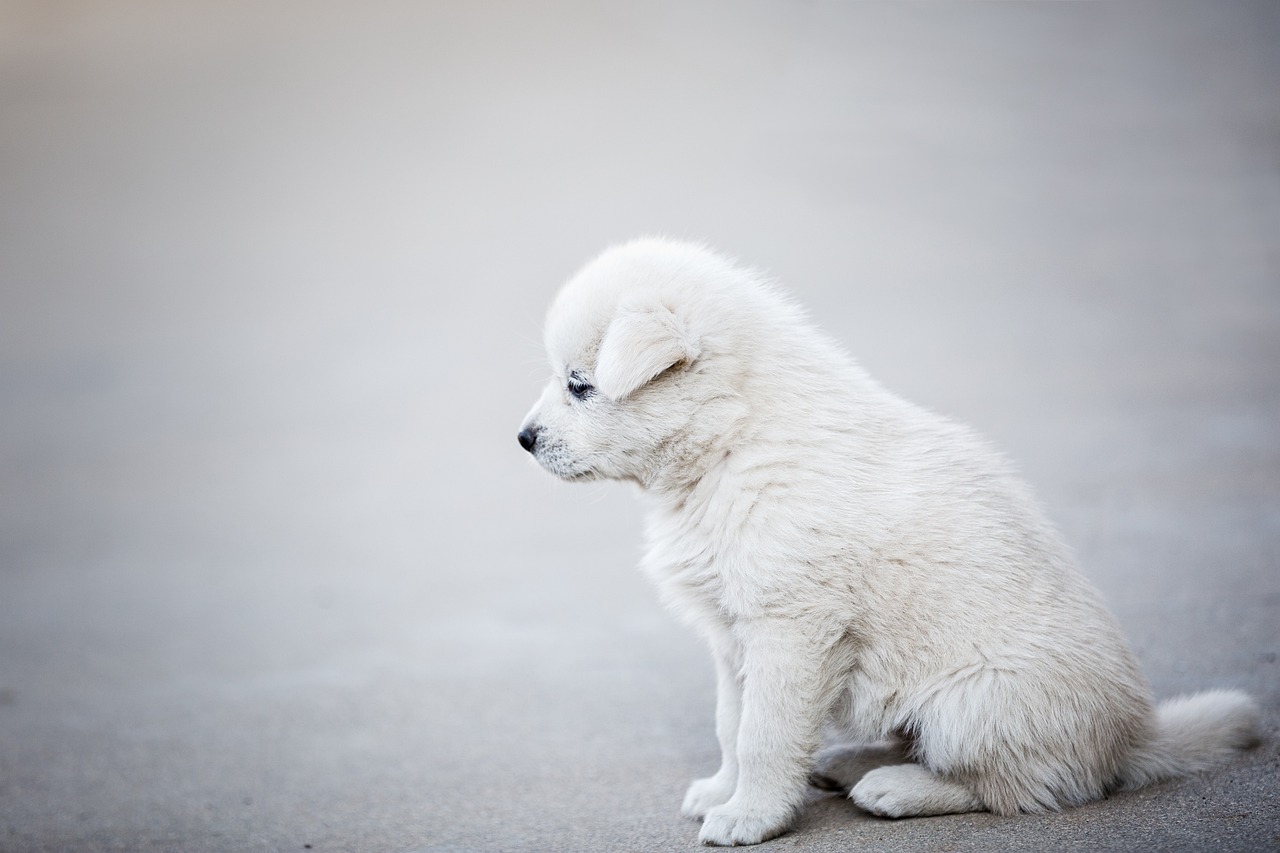
Gradual Progression of Training
When it comes to teaching your dog to wait for food, the key lies in patience and gradual progression. Just like humans, dogs need time to adapt to new behaviors, and rushing the process can lead to confusion and frustration. Start with short waiting periods, perhaps just a few seconds, and gradually increase the duration as your dog becomes more comfortable with the concept of waiting. This method not only helps your dog learn the wait command effectively but also builds their patience over time.
Imagine you’re learning to hold your breath underwater. You wouldn’t start by trying to stay submerged for a minute, right? You’d begin with a few seconds and slowly work your way up. The same principle applies to your dog. Start by placing their food bowl in front of them and asking them to wait. If they can hold off for a few seconds without breaking the command, reward them with a treat. This reward reinforces the behavior, making them more likely to wait in the future.
As your dog gets accustomed to the command, you can gradually increase the waiting time. For instance, you might start with 5 seconds, then 10, and eventually work your way up to 30 seconds or more. Keep in mind that every dog is different; some may pick it up quickly, while others may take a bit longer. It’s essential to monitor their comfort level and adjust the training pace accordingly. If they seem overwhelmed or anxious, it’s perfectly fine to dial back the waiting time until they feel more secure.
Here’s a simple table to help you track the progression of your dog's training:
| Week | Waiting Time (Seconds) | Notes |
|---|---|---|
| 1 | 5 | Introduce the wait command. |
| 2 | 10 | Reward for successful waits. |
| 3 | 15 | Increase distractions slightly. |
| 4 | 20 | Maintain consistency in rewards. |
| 5 | 30 | Evaluate progress and adjust as needed. |
Incorporating treats wisely during these training sessions is crucial. Use them as a reward when your dog successfully waits for the designated time. This not only reinforces the behavior but also makes the experience enjoyable for your furry friend. Remember, the goal is to create a positive association with the wait command. If they see that waiting leads to tasty rewards, they’ll be more inclined to comply in the future.
Finally, keep a close eye on your dog’s progress. Monitoring their behavior allows you to identify any areas where they might be struggling. If you notice that they are consistently breaking the wait command, it might be a sign to slow down and give them more time to adjust. Training should always be a positive experience for both you and your dog, so be sure to celebrate the small victories along the way!
- How long should I train my dog each day? It's best to keep training sessions short and engaging, around 5-10 minutes, to maintain your dog's attention.
- What if my dog doesn't respond to the wait command? If your dog struggles, try reducing the waiting time and gradually increasing it as they improve.
- Can I use toys as a reward instead of treats? Absolutely! Some dogs respond better to toys or playtime as a reward.
- How do I know if my dog is ready for longer wait times? Look for signs of patience, such as your dog staying calm and focused during shorter waits.
Using Treats Wisely
When it comes to training your dog to wait for food, is a game-changer. Imagine your dog as a little chef, eager to whip up a delicious meal, but first, they need to learn the art of patience. Treats are not just rewards; they are powerful tools that can transform your training sessions into fun and engaging experiences. But how do you make the most of them?
First off, it’s essential to choose the right treats. Not all treats are created equal! You want to pick something that your dog absolutely loves—something that makes their tail wag like a propeller. This could be anything from small pieces of chicken, cheese, or even special training treats that are designed to be extra tasty. The key is to ensure that the treats are small enough so that your dog can enjoy them quickly, keeping the momentum of the training session going.
Next, timing is everything. You want to reward your dog the moment they successfully wait for their food. This immediate reinforcement helps them make the connection between their behavior and the reward. Think of it like a light bulb going off in their head: “Oh, I waited, and now I get a treat!” It’s all about creating that positive association.
Additionally, consider using treats strategically during your training sessions. Start with a higher frequency of rewards when your dog is just learning the wait command. For instance, if your dog waits for just a few seconds, reward them immediately. As they get better at waiting, you can gradually reduce the frequency of treats. This method not only keeps your dog motivated but also teaches them that waiting longer can lead to even greater rewards.
Here’s a quick tip: you can also mix it up! Dogs love variety, so try alternating between different types of treats. This keeps things exciting and can help maintain your dog's interest in training. Just remember to keep the treats healthy and suitable for your dog's diet, as we want to avoid any tummy troubles!
Finally, don’t forget to celebrate the small victories. Each time your dog waits patiently, it’s a step in the right direction. Give them a treat, some enthusiastic praise, and maybe even a little playtime afterward. This not only reinforces the behavior but also strengthens the bond you share with your furry friend.
In conclusion, using treats wisely in your training routine can make a world of difference. By selecting the right rewards, timing them perfectly, and keeping the experience fun and varied, you’ll not only teach your dog to wait for food but also create a positive and engaging learning environment. So, grab those treats and get ready for some tail-wagging training sessions!
- How long should I train my dog each day?
Short, consistent sessions of about 5-10 minutes are ideal. This keeps your dog engaged without overwhelming them.
- What if my dog doesn’t seem interested in treats?
Try different types of treats to find what excites them. You can also use their favorite toys or playtime as rewards.
- Can I use their regular food as treats?
Absolutely! You can use a portion of their daily food as training treats, just be mindful of their overall intake to avoid overfeeding.
- How do I know if my dog is ready for longer wait times?
Observe your dog's behavior. If they are consistently waiting for short periods without getting restless, gradually increase the wait time.
Monitoring Your Dog's Progress
Monitoring your dog's progress during training is crucial to ensure that they are learning effectively and that you are on the right track. Just like humans, dogs can have different learning curves, and being aware of their progress allows you to tailor your training methods to suit their individual needs. One effective way to monitor progress is by keeping a training journal. In this journal, you can note down the duration of waiting times, your dog's behavior during training sessions, and any challenges you encounter. This record not only serves as a reference but also helps you celebrate milestones along the way.
Additionally, consider using a simple grading system to evaluate your dog's performance. For instance, you can rate their patience on a scale from 1 to 5, where 1 indicates they rushed towards the food immediately, and 5 means they waited patiently for an extended period. This method provides a visual representation of their improvement over time. You might find it helpful to create a progress table to track these ratings:
| Date | Duration of Wait (seconds) | Patience Rating (1-5) | Notes |
|---|---|---|---|
| 01/01/2023 | 5 | 2 | Rushed towards food |
| 01/05/2023 | 10 | 3 | Improved slightly |
| 01/10/2023 | 15 | 4 | Good progress, minimal distractions |
| 01/15/2023 | 20 | 5 | Excellent patience! |
By consistently reviewing this table, you can gain insights into your dog's learning journey and make necessary adjustments to your training plan. Remember to celebrate the small victories; every second your dog waits patiently is a step towards mastering the wait command. Keeping an eye on their progress not only helps in refining your training techniques but also strengthens the bond between you and your furry friend as you work together towards a common goal.
- How long does it take for a dog to learn to wait for food? - The time varies by dog, but with consistent training, most dogs can learn the wait command within a few weeks.
- What if my dog refuses to wait? - If your dog struggles with the wait command, try breaking the training into shorter sessions and gradually increasing the difficulty.
- Can I use toys instead of food for training? - Yes! Using toys can be a great alternative, especially if your dog is more motivated by play than food.
- How do I know if my dog is making progress? - Track their waiting times and behavior during training sessions. A gradual increase in patience is a good sign of progress.

Common Challenges and Solutions
Training your dog to wait for food might sound simple, but it can come with its fair share of challenges. Just like us, dogs have their own personalities and quirks, which can make the training process feel like a rollercoaster ride at times. But don't worry! Understanding these common challenges and knowing how to tackle them can turn this ride into a smooth journey.
One of the most prevalent issues you might encounter is your dog's impatience. It's completely natural for dogs to get excited about meal times. They see the food, they smell the food, and their instinct is to dive right in! If your dog starts to whine or fidget, it’s crucial to remain calm and consistent. Instead of giving in to their impatience, try gradually increasing the wait time. Start with just a few seconds and then slowly extend it as your dog becomes more comfortable with the command. This approach teaches them that good things come to those who wait!
Another common hurdle is distractions. Imagine trying to focus on a task while a loud TV is blaring in the background or a squirrel is darting across the yard. Dogs can get easily distracted, especially if they're in an environment filled with stimuli. If you notice that your dog is having a hard time concentrating, consider changing your training location to a quieter space. Alternatively, you can use barriers, like baby gates, to minimize external distractions. This way, your dog can focus solely on you and the task at hand.
As you navigate through these challenges, remember that patience and perseverance are key. Each dog is unique, and they will learn at their own pace. Celebrate the small victories along the way, and don’t hesitate to adapt your training techniques if something isn’t working. The goal is to foster a positive experience for both you and your furry friend.
- How long should I train my dog each day? It's recommended to keep training sessions short and engaging, around 5 to 10 minutes, especially for puppies. Gradually increase the duration as your dog gets the hang of it!
- What if my dog refuses to wait? If your dog seems resistant, go back to the basics. Start with shorter wait times and gradually increase them. It’s all about building their confidence.
- Can I use toys instead of food? Absolutely! If your dog is more motivated by toys, feel free to use them as rewards during training.
Dealing with Impatience
When it comes to training your dog to wait for food, impatience can be a significant hurdle. Just like us, dogs can get a little antsy when they're hungry. It's crucial to remember that their instincts are wired for immediate gratification, which means they might struggle with the concept of waiting. So, what can you do to help your furry friend learn patience? The answer lies in staying calm and consistent. When your dog shows signs of impatience, such as whining, barking, or fidgeting, it’s important not to react negatively. Instead, take a deep breath, and remind yourself that patience is key in this process.
One effective technique is to gradually increase the wait times. Start with just a few seconds and slowly build up to longer periods. This gradual progression allows your dog to adjust to the idea of waiting without feeling overwhelmed. For example, you might begin by asking your dog to wait for just five seconds before releasing them to eat. Once they master that, you can extend the wait time to ten seconds, and so on. The goal is to make these increments manageable and not too challenging.
Additionally, consider incorporating some distractions during training to help your dog learn to focus despite their impatience. You can do this by introducing a toy or a treat placed a short distance away. This will encourage your dog to practice self-control and reinforce the idea that waiting leads to rewards. Remember, each time your dog successfully waits, shower them with praise and rewards. Positive reinforcement is a powerful motivator and will help them associate waiting with good things.
It’s also helpful to maintain a consistent routine when it comes to meal times. Dogs thrive on routine, and knowing when to expect food can alleviate some of their impatience. If they know that food is coming at a specific time, they may be more inclined to wait patiently. In this way, you’re not just teaching them a command; you’re also helping them develop a sense of security and understanding of what to expect from you.
Lastly, remember that every dog is unique, and what works for one may not work for another. Be patient with your dog as they learn this new skill. Celebrate their small victories along the way, and don’t hesitate to adjust your approach if you find that certain methods aren’t resonating with them. Training should be a fun and rewarding experience for both you and your dog!
- How long should I train my dog to wait for food?
Training sessions should be short and frequent, ideally lasting around 5-10 minutes. This helps keep your dog engaged and focused.
- What if my dog refuses to wait?
If your dog is consistently refusing to wait, it may be beneficial to reassess your training environment and approach. Ensure there are minimal distractions and consider shortening the wait time.
- Can I use toys as rewards?
Absolutely! Using toys as rewards can be a great motivator, especially for dogs that are more play-driven than food-driven.
- How can I tell if my dog is making progress?
Look for signs of improvement, such as your dog waiting longer periods before getting their food or showing less impatience during training sessions.
Addressing Distractions
Training your dog to wait for food can be quite a challenge, especially when distractions are lurking around every corner. Imagine trying to focus on a task while someone is blasting music or a tempting aroma wafts through the air. For your dog, the world is filled with enticing sounds, smells, and sights that can easily divert their attention. To tackle this issue head-on, it's crucial to create an environment that minimizes these distractions.
Start by assessing the training area. Is it a bustling room with family members moving about, or a quiet corner where your dog can feel secure? A calm environment is essential for effective training. If your living room is too noisy, consider moving to a quieter space, like a bedroom or a backyard. You want your dog to focus solely on you and the task at hand, without external stimuli pulling their attention away.
In some cases, you might need to implement physical barriers. For instance, if there are other pets in the house that may distract your dog, you could use baby gates or crates to separate them during training sessions. This way, your dog can concentrate on learning without the temptation of other furry friends interrupting their focus.
Another effective strategy is to gradually introduce distractions. Start with a completely distraction-free environment, and as your dog becomes more proficient at waiting, slowly add in minor distractions. This could be a family member walking by, or a toy rolling across the floor. This method not only helps your dog learn to maintain focus but also prepares them for real-life scenarios where distractions are unavoidable.
Lastly, patience is key. If your dog gets distracted, gently guide them back to the task. Use positive reinforcement to encourage them when they regain focus. Remember, training is a journey, and your dog will learn at their own pace. By consistently addressing distractions and maintaining a calm demeanor, you’ll set your dog up for success in mastering the wait command.
- Q: How long should I train my dog each day?
A: Short, frequent sessions of about 5-10 minutes are often more effective than longer sessions. This keeps your dog engaged and prevents frustration. - Q: What if my dog never seems to get it?
A: Every dog learns at their own pace. If your dog struggles, consider going back to simpler commands or reducing distractions further. - Q: Can I use toys instead of treats for rewards?
A: Absolutely! Many dogs respond well to toys, especially if they are favorite items. Just ensure that the toy is used as a reward for waiting patiently. - Q: How do I know when to increase the wait time?
A: Once your dog consistently waits for short periods without losing focus, gradually increase the time. Look for signs of impatience and adjust accordingly.
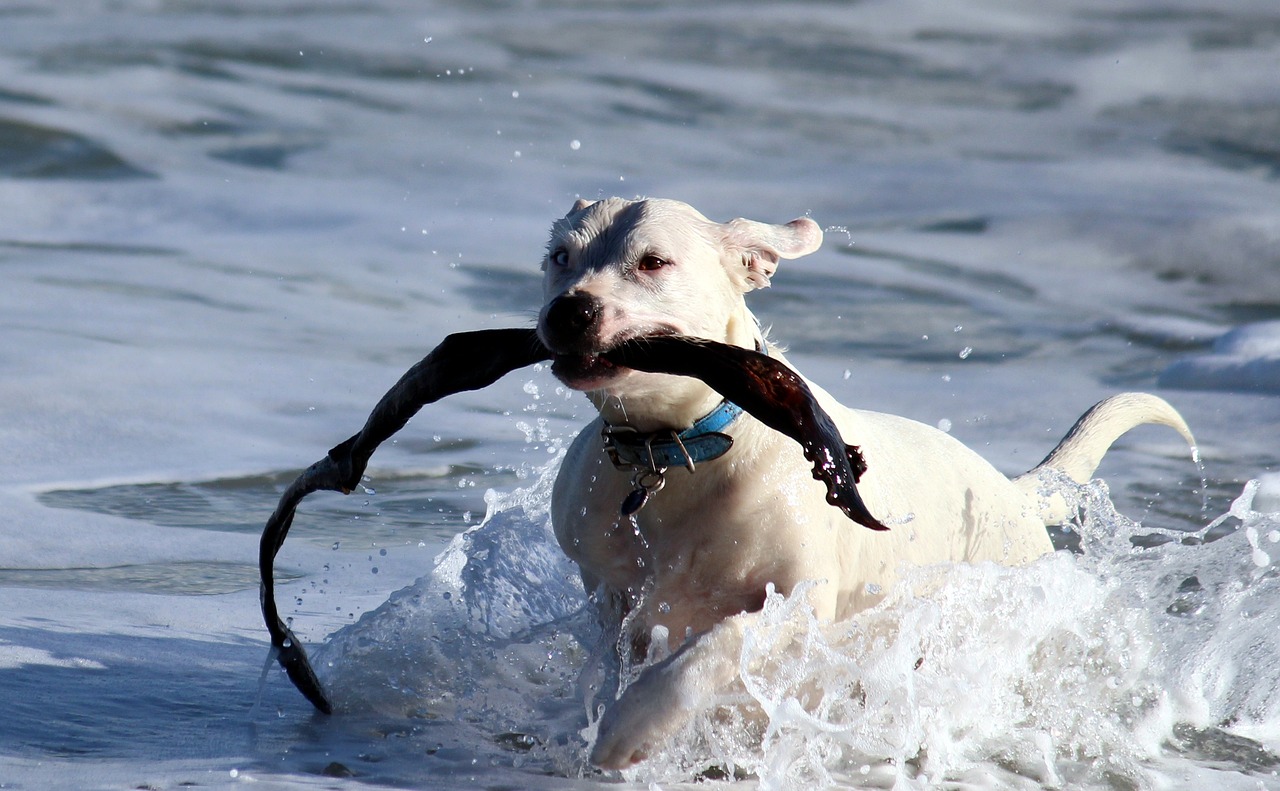
Celebrating Successes
When it comes to training your dog to wait for food, recognizing and celebrating successes is crucial for maintaining motivation and reinforcing good behavior. Just like humans, dogs thrive on positive reinforcement, and acknowledging their progress helps to create a positive training atmosphere. Imagine your dog’s wagging tail and bright eyes when they realize they’ve done something right! It’s a heartwarming sight that strengthens the bond between you and your furry friend.
One effective way to celebrate your dog's achievements is by setting milestones throughout the training process. These milestones can be small, such as successfully waiting for a few seconds, or larger, like waiting for a full minute before being allowed to eat. Each time your dog reaches a milestone, make sure to reward them with praise, treats, or even a fun play session. This not only reinforces the behavior but also makes the training process enjoyable for both of you.
Here are some ideas for rewarding milestones during your training:
- Give a treat immediately after your dog waits patiently.
- Offer verbal praise like "Good job!" or "Well done!"
- Engage in a short play session with their favorite toy.
- Provide extra cuddle time as a reward for their patience.
Another important aspect of celebrating successes is to maintain a positive attitude. If your dog struggles with a particular milestone, it’s essential to remain calm and supportive. Remember, training is a journey, and every dog learns at their own pace. By celebrating the small victories along the way, you’re not only encouraging your dog but also fostering a strong connection built on trust and understanding.
Lastly, consider keeping a training journal to track your dog's progress. Documenting their milestones and successes can serve as a motivational tool for you both. When you look back and see how far your dog has come, it will remind you of the patience and dedication you’ve both put into this training journey. Plus, it’s a great way to reflect on the fun moments you’ve shared together!
Here are some common questions that dog owners might have regarding training their pets to wait for food:
- How long should I train my dog each day? - Short, consistent sessions of about 5-10 minutes are ideal. This keeps your dog engaged without overwhelming them.
- What if my dog refuses to wait? - Patience is key! Go back to shorter wait times and gradually increase them as your dog improves.
- Can I use other rewards besides treats? - Absolutely! Dogs respond well to praise, toys, and even affection. Find what motivates your dog the most.
- How do I know when my dog is ready for longer wait times? - If your dog successfully waits for the desired time without breaking focus, they’re ready to progress.
Rewarding Milestones
When it comes to training your dog to wait for food, recognizing and rewarding milestones is absolutely crucial. Think of it as celebrating small victories on the path to a bigger goal. Just like we humans feel motivated when acknowledged for our achievements, dogs thrive on positive reinforcement. Each time your furry friend successfully waits for their meal, it’s a step towards building their patience and discipline.
To effectively reward these milestones, you can set specific goals that are realistic and achievable for your dog. For instance, you might start with a short waiting period of just a few seconds. Once your dog masters that, you can gradually increase the time. When they succeed, it’s time to celebrate! Use treats, praise, or even a favorite toy to show them they’ve done well. This not only reinforces the behavior but also makes the training experience enjoyable for both of you.
Consider creating a simple reward chart to track your dog's progress. This can help you visualize their achievements and stay motivated. For example, you could have a chart that looks something like this:
| Milestone | Reward | Date Achieved |
|---|---|---|
| Waited 5 seconds | Small treat | 02/01/2023 |
| Waited 10 seconds | Praise and petting | 02/05/2023 |
| Waited 15 seconds | Favorite toy | 02/10/2023 |
As your dog progresses, you’ll notice a significant improvement not just in their behavior but also in your bond. Celebrating these milestones enhances your relationship, making it stronger and more fulfilling. Remember, the key is consistency; the more you reward your dog for their achievements, the more eager they will be to continue learning and growing. So, go ahead and throw a mini celebration each time they hit a new milestone—your dog will love it, and you’ll both enjoy the journey together!
- How long should I train my dog each day? It's best to keep training sessions short and sweet, around 5-10 minutes, to keep your dog engaged.
- What if my dog doesn’t respond to the wait command? Patience is key! Go back to basics and ensure your dog understands the command before progressing.
- Can I use different rewards? Absolutely! Mix it up with treats, toys, or verbal praise to keep your dog motivated.
- How do I know if my dog is ready for longer wait times? If your dog consistently waits for the current duration without fuss, they’re likely ready to level up!
Building a Stronger Bond
Training your dog to wait for food is more than just teaching them a command; it's an opportunity to forge a deeper connection between you and your furry friend. When you invest time and effort into training, you're not only instilling discipline but also building trust. Your dog learns that you are the source of good things, and in turn, they become more attentive and responsive to your cues.
Think of it this way: every time you practice the wait command, you're creating a moment of shared understanding. Your dog begins to associate waiting with positive outcomes, which strengthens their bond with you. This mutual respect and understanding can lead to a more harmonious relationship, where your dog feels safe and secure in their environment. It's like laying down the bricks of a sturdy house; each training session adds to the foundation of your relationship.
Moreover, the act of training together can be a fun and rewarding experience. Dogs thrive on interaction and engagement, and when you incorporate play and praise into your training sessions, it becomes a joyful activity rather than a chore. For instance, you can use a mix of verbal praise, treats, and affection to reward your dog when they successfully wait for their food. This not only reinforces the behavior but also makes your dog feel valued and loved.
In addition to training, consider integrating other bonding activities into your routine. Going for walks, playing fetch, or simply spending quiet time together can enhance your relationship. These activities allow you to communicate and connect on different levels, reinforcing the idea that you are a team. Remember, a well-trained dog is often a happier dog, and a happy dog leads to a happy owner!
As you continue this journey, it's important to celebrate the milestones along the way. Whether it's successfully waiting for a few seconds or mastering the command for longer periods, recognizing these achievements fosters a positive training atmosphere. Acknowledgment can come in many forms, from a simple pat on the head to a special treat. This not only motivates your dog but also strengthens the bond you share.
Ultimately, the goal of training your dog to wait for food is to create a harmonious household where both you and your dog thrive. The patience and effort you put into this process will pay off in spades, resulting in a dog that is not only well-behaved but also deeply connected to you. So, embrace the journey, enjoy the process, and watch as your relationship blossoms into something truly special.
- How long should I train my dog each day? It's best to keep training sessions short and engaging, around 5 to 10 minutes, to maintain your dog's focus.
- What if my dog doesn't respond to the wait command? Be patient and consistent. Every dog learns at their own pace. Consider adjusting your rewards or trying a different approach.
- Can I train my dog without treats? Yes! While treats are effective, you can also use praise, toys, or playtime as rewards.
- How do I know if my dog is ready for longer wait times? Gradually increase the duration as your dog becomes more comfortable. Look for signs of relaxation and focus.
Frequently Asked Questions
- How long does it take to teach my dog to wait for food?
The time it takes to teach your dog to wait for food varies depending on your dog's temperament and previous training experience. Generally, with consistent practice, you can see improvements within a few weeks. Remember, patience is key!
- What should I do if my dog doesn't seem to understand the wait command?
If your dog is struggling with the wait command, try breaking the training down into smaller steps. Start with very short wait times and gradually increase them as your dog becomes more comfortable. Using treats as rewards can also help reinforce the behavior.
- Can I use this training method with an older dog?
Absolutely! Dogs of all ages can learn new tricks and commands. Older dogs may take a bit longer to adjust, but with patience and consistent training, they can certainly learn to wait for their food just like a younger pup.
- What if my dog gets distracted during training?
If distractions are a problem, consider changing your training environment to a quieter space. You can also use barriers to minimize external stimuli, allowing your dog to focus better on the task at hand.
- Is it okay to use the leash during training?
Yes, using a leash can be very helpful. It gives you control over your dog and prevents them from rushing towards the food. Just make sure to use the leash gently and positively to avoid causing any stress.
- How can I celebrate my dog's training successes?
Celebrating your dog's successes can be as simple as giving them a treat, verbal praise, or extra playtime. Recognizing their achievements, no matter how small, fosters a positive training atmosphere and strengthens your bond.




